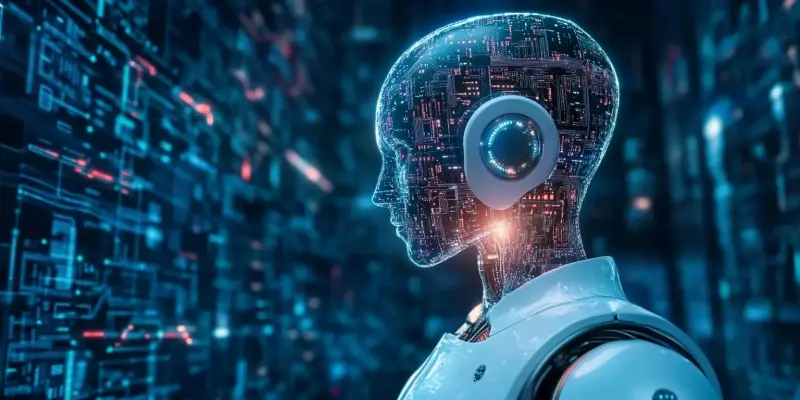In the rapidly evolving world of technology, Microsoft is once again at the forefront with the introduction of Muse, a generative AI model designed specifically for the world of game development. With the release of Muse, Microsoft’s Xbox division aims to streamline the game creation process by automating a multitude of small yet essential tasks, ultimately enhancing efficiency and potentially transforming the industry. This move aligns with Microsoft’s broader embrace of generative AI, led by CEO Satya Nadella, as the company seeks to extend these innovations to game development. The implications of this technological advancement and its reception within the gaming community are significant and warrant close examination.
Muse and Its Potential Impact on Game Development
Automating Small Decisions in Game Creation
The primary function of Muse is to automate numerous small decisions that accumulate during the game development process. By training Muse on Ninja Theory’s game Bleeding Edge, Microsoft aims to simplify the intricate and often cumbersome nature of game creation. The idea is that this AI model can take care of repetitive and time-consuming tasks, enabling developers to focus more on creative and strategic elements. With generative AI handling these aspects, developers may experience a more streamlined workflow, potentially reducing the time and cost associated with bringing a game to market.
However, despite the exciting potential of Muse, it is important to consider the skepticism within the game development community. A recent survey has shown that 30% of developers have a negative view of generative AI, fearing that it might replace essential creative processes. This sentiment reflects a broader trend of caution and resistance toward fully integrating AI into the creative aspects of game development. Developers are concerned that reliance on AI could lead to a homogenization of game design, with unique and innovative ideas potentially being overshadowed by algorithmically generated content.
Industry Trends and Adoption
The introduction of Muse is not an isolated example of leveraging AI in game development. Capcom, another significant player in the industry, is also exploring the use of generative AI to eliminate tedious tasks during the idea phase of game creation. By employing AI to handle less creative aspects, Capcom aims to free up developers’ time, allowing them to concentrate more on innovation and creativity. This approach indicates a broader industry trend of using AI to enhance efficiency rather than replace human creativity. The key challenge lies in striking a balance between utilizing AI to streamline processes and preserving the unique creative inputs that human developers bring to the table.
As a major platform holder and publisher, Microsoft must consider whether prioritizing developers’ opinions is necessary at this critical juncture. Microsoft faces a complex array of challenges, including addressing design complexity, maintaining cost-efficiency, and speeding up development timelines. An example of these challenges is the new Fable game, which has been in development since 2018. The protracted development cycle illustrates the potential value of generative AI like Muse in accelerating project timelines. However, the real impact on lengthy development processes remains to be seen, as the adoption and integration of AI in game development progress.
The Future of Game Preservation and Accessibility
Preserving Older Games for Modern Audiences
One of the most compelling arguments for Muse, as stated by Fatima Kardar, corporate vice president of gaming AI at Microsoft, is its potential role in preserving older games. The AI model could make classic games accessible to modern audiences without the need for extensive redevelopment. This capability could address issues related to the costs and efforts associated with remastering and maintaining backward compatibility of older titles. By leveraging Muse, Microsoft aims to breathe new life into its vast catalog of legacy games, potentially reducing the need for costly remasters and making these titles readily available to contemporary players.
However, it is worth noting that there is currently no clear evidence to support this claim in the information presented about Muse. While the concept is promising, the practical implementation and success of using AI for game preservation and accessibility have yet to be demonstrated. As with any emerging technology, the proof will be in how well Muse can deliver on these ambitious goals. The broader gaming community remains hopeful yet cautious as they await concrete examples of Muse’s capabilities in this area. If successful, the integration of Muse for game preservation could set a precedent for how the industry handles legacy content in the future.
Balancing Innovation with Industry Sentiment
In the ever-evolving realm of technology, Microsoft once again positions itself at the cutting edge with the launch of Muse, a generative AI model specifically crafted for the gaming industry. The advent of Muse signifies a strategic move by Microsoft’s Xbox division to simplify the game development process by automating a variety of small but crucial tasks. This innovation is expected to significantly boost efficiency, potentially revolutionizing the industry. This development is in line with Microsoft’s broader strategy of embracing generative AI, under the leadership of CEO Satya Nadella, as the company aims to bring these advancements to the game development sector. The potential impact of this technology and its reception within the gaming community is substantial and merits thorough scrutiny. This exciting development could lead to a new era in game creation, where the blending of human creativity and AI prowess results in groundbreaking experiences for gamers around the world.

